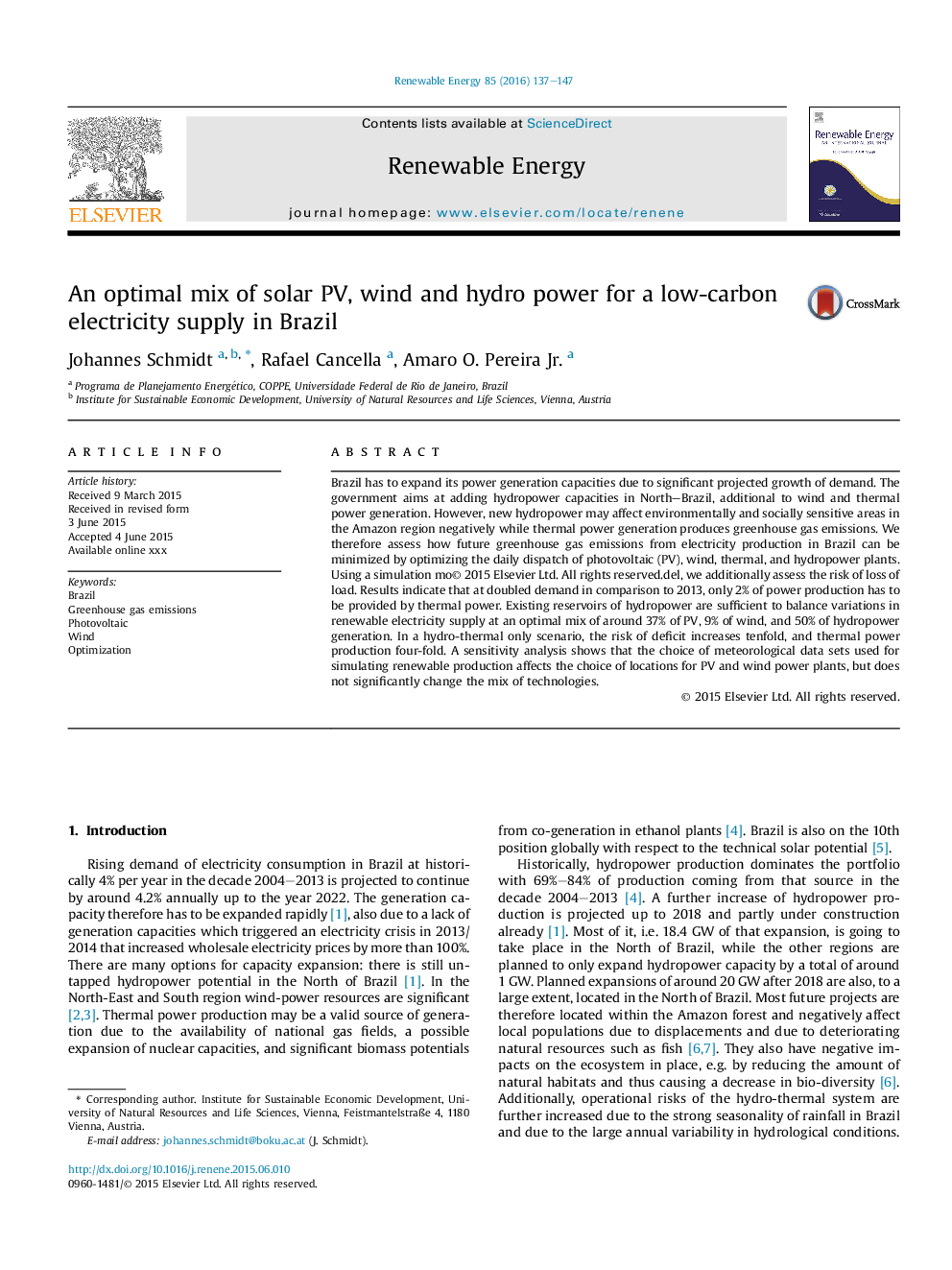| Article ID | Journal | Published Year | Pages | File Type |
|---|---|---|---|---|
| 6766425 | Renewable Energy | 2016 | 11 Pages |
Abstract
Brazil has to expand its power generation capacities due to significant projected growth of demand. The government aims at adding hydropower capacities in North-Brazil, additional to wind and thermal power generation. However, new hydropower may affect environmentally and socially sensitive areas in the Amazon region negatively while thermal power generation produces greenhouse gas emissions. We therefore assess how future greenhouse gas emissions from electricity production in Brazil can be minimized by optimizing the daily dispatch of photovoltaic (PV), wind, thermal, and hydropower plants. Using a simulation model, we additionally assess the risk of loss of load. Results indicate that at doubled demand in comparison to 2013, only 2% of power production has to be provided by thermal power. Existing reservoirs of hydropower are sufficient to balance variations in renewable electricity supply at an optimal mix of around 37% of PV, 9% of wind, and 50% of hydropower generation. In a hydro-thermal only scenario, the risk of deficit increases tenfold, and thermal power production four-fold. A sensitivity analysis shows that the choice of meteorological data sets used for simulating renewable production affects the choice of locations for PV and wind power plants, but does not significantly change the mix of technologies.
Related Topics
Physical Sciences and Engineering
Energy
Renewable Energy, Sustainability and the Environment
Authors
Johannes Schmidt, Rafael Cancella, Amaro O. Jr.,
